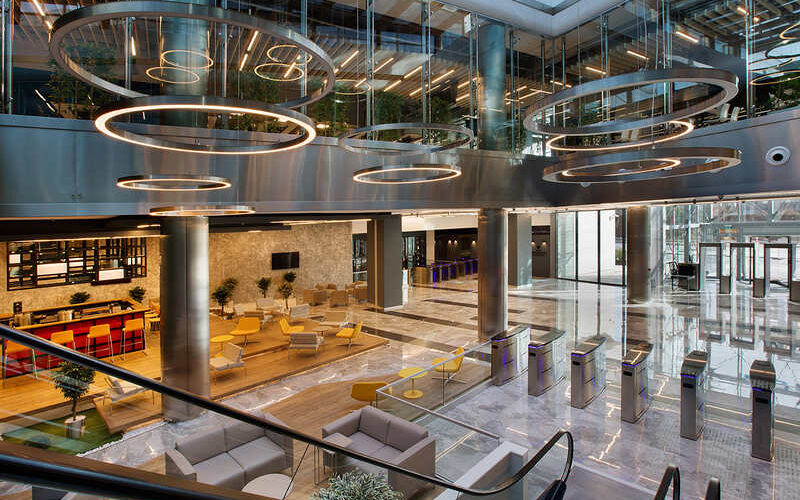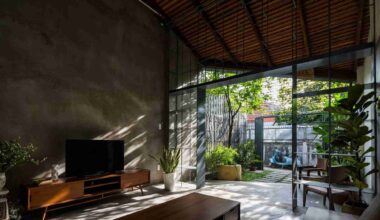The face of commercial design spaces is rapidly evolving. Gone are the days of bland, utilitarian interior designs. Today, businesses recognize the immense impact of design on their brand image, employee productivity, and customer experience. An expertly designed commercial space can be a powerful tool for attracting and retaining clients, boosting morale, and enhancing overall business performance. This is where full-service design comes into play, particularly through specialized commercial interior design services.
Understanding the Power of Design
Full-service design is more than just redecorating a space, it’s about transforming it from the ground up. This approach integrates aesthetics with functionality, considering how a space will be used and how it should feel. Designers start by understanding the business’s target audience, company culture, and brand identity to create an inspiring space that resonates with both clients and employees of the company.
Design isn’t just about looks, it’s also about how a space performs. For instance, incorporating natural light and open spaces can make work environments more pleasant and energizing. This thoughtful integration ensures that every element of the space supports the business’s goals and enhances overall efficiency. To achieve such transformative results, businesses often turn to commercial interior design services.
The Before: Challenges in Commercial Spaces
Before the magic of full-service design takes hold, many commercial spaces face common issues:
- Outdated Aesthetics: Old-fashioned decor and design elements can make a business appear behind the times. This can impact its ability to attract and retain clients, as a dated appearance might suggest that the business is not up-to-date with current trends or technologies. Moreover, an outdated look can dampen employee morale, making the workspace less enjoyable and motivating. Engaging commercial interior design services can revitalize a space, giving it a fresh and modern look that aligns with current design trends.
- Inefficient Layout: Poorly designed spaces can lead to wasted resources and hinder productivity. An inefficient layout might cause unnecessary disruptions and make it tough for employees to collaborate effectively. For example, a cramped workspace with poor flow can cause high levels of stress and lower efficiency, while an open, well-planned layout can facilitate smoother operations and enhance teamwork. Commercial interior design services excel at optimizing layouts to create efficient and effective work environments.
- Lack of Branding: Spaces that don’t reflect a company’s brand identity may fail to engage customers and employees. Without a cohesive design, a business might struggle to communicate its values and mission effectively. A well-branded space not only attracts clients but also reinforces the company’s values, encouraging customers to connect with the brand on a deeper level. Through commercial interior design services, businesses can create spaces that vividly reflect their brand identity.
- Functional Limitations: Outdated electrical systems, inadequate lighting, and poor acoustics can impact comfort and productivity. For example, insufficient lighting can strain employees’ eyes and affect their performance, while poor acoustics can lead to noisy environments that disrupt concentration. Addressing these functional issues is crucial for creating a space that supports both comfort and efficiency. Commercial interior design services can address these limitations by incorporating modern solutions that enhance both form and function.
The Full-Service Design Process
Full-service design takes a comprehensive approach to address these challenges. Here’s how it typically unfolds:
- Initial Consultation: Designers start with a meeting to understand the client’s business goals, target audience, and vision for the space. This step is crucial for aligning the design with the client’s needs. During this phase, designers gather information about the company’s mission, values, and any specific requirements or preferences for the space.
- Space Assessment: A detailed evaluation of the existing space identifies strengths, weaknesses, and areas for improvement. This assessment helps pinpoint exactly what needs to change. Designers may examine factors such as traffic flow, lighting conditions, and spatial functionality to create a detailed plan for renovation.
- Concept Development: Designers create initial concepts and mood boards based on the client’s brief and space assessment. This stage includes brainstorming ideas and visualizing different design directions. Mood boards help clients visualize how different elements, including color schemes, materials, and furniture styles, will come together.
- Design Development: Detailed plans, including floor plans, elevations, and material selections, are developed during this phase. This phase translates concepts into actionable designs. Designers refine the layout, choose materials that align with the brand’s identity, and ensure that all functional needs are met.
- Project Management: The design firm oversees the entire construction and installation process. They ensure the project is on schedule and within budget, handling all the details so clients don’t have to. This includes coordinating with contractors, managing supplies, and troubleshooting any issues that may arise during the renovation process.
- Final Touches: The space is completed with furniture, artwork, and accessories, creating a polished, inviting atmosphere. These finishing touches tie everything together, making the space ready for use.
The After: A Transformed Space
The results of a full-service design project can be striking. Here are some common benefits:
- Enhanced Brand Image: A well-designed space strengthens a company’s brand identity, leaving a memorable impression on clients and visitors. It visually communicates the company’s values and style, making the business more recognizable and appealing.
- Increased Productivity: A functional and aesthetically pleasing environment boosts employee morale and productivity. Employees are liklier to feel motivated and engaged in a well-designed space. Features such as ergonomic furniture, collaborative areas, and comfortable break rooms can contribute to a more productive and satisfying work experience.
- Improved Customer Experience: An inviting and thoughtfully designed space attracts and retains customers. A positive environment can enhance customer satisfaction and loyalty. For instance, a retail store with a well-planned layout and appealing design can make shopping more enjoyable, encouraging customers to spend more time and money.
Real-World Transformations
To illustrate the power of full-service design, let’s look at a couple of real-world examples:
- Office Space Transformation: A traditional office filled with cubicles was transformed into an open, collaborative workspace. The new design included biophilic elements such as indoor plants and natural light, along with modern furnishings and flexible workstations. The result was a more engaging environment that fostered teamwork and creativity.
- Retail Store Revamp: A dated clothing store received a makeover with updated fixtures, enhanced lighting, and refreshed visual merchandising. The redesign created a more inviting atmosphere and improved the shopping experience. As a result, foot traffic increased, and sales saw a notable boost.
The Future of Commercial Design
As technology advances, the future of commercial design promises even more innovation and sustainability. Trends such as smart office technology, flexible workspaces, and eco-friendly materials are shaping the future of interiors. Full-service design firms are at the forefront of these developments, helping businesses stay ahead of the curve.
Smart office technology, for example, integrates automation and data analytics to create more efficient and adaptable work environments. Full-service design firms will continue to play a crucial role in incorporating these trends into commercial spaces.


